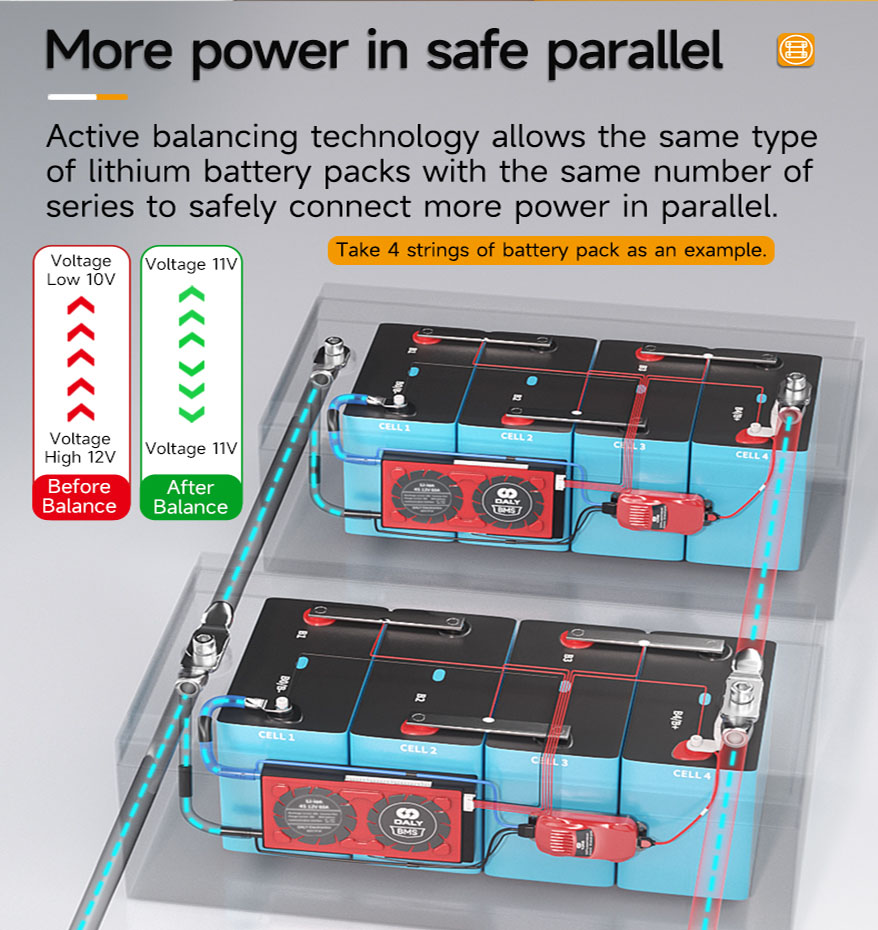When connecting lithium batteries in parallel, attention should be paid to the consistency of the batteries, because parallel lithium batteries with poor consistency will fail to charge or overcharge during the charging process, thereby destroying the battery structure and affecting the life of the entire battery pack. Therefore, when choosing parallel batteries, you should avoid mixing lithium batteries of different brands, different capacities, and different levels of old and new. The internal requirements for battery consistency are: lithium battery cell voltage difference ≤ 10mV, internal resistance difference ≤ 5mΩ, and capacity difference ≤ 20mA.
The reality is that the batteries circulating in the market are all second-generation batteries. While their consistency is good in the beginning, the consistency of the batteries deteriorates after a year. At this time, due to the voltage difference between the battery packs and the internal resistance of the battery being very small, a large current of mutual charging will be generated between the batteries at this time, and the battery is easily damaged at this time.
So how to solve this problem? Generally, there are two solutions. One is to add a fuse between the batteries. When a large current passes through, the fuse will blow to protect the battery, but the battery will also lose its parallel state. Another method is to use a parallel protector. When a large current passes through, the parallel protector limits the current to protect the battery. This method is more convenient and will not change the parallel state of the battery.
Post time: Jun-19-2023






